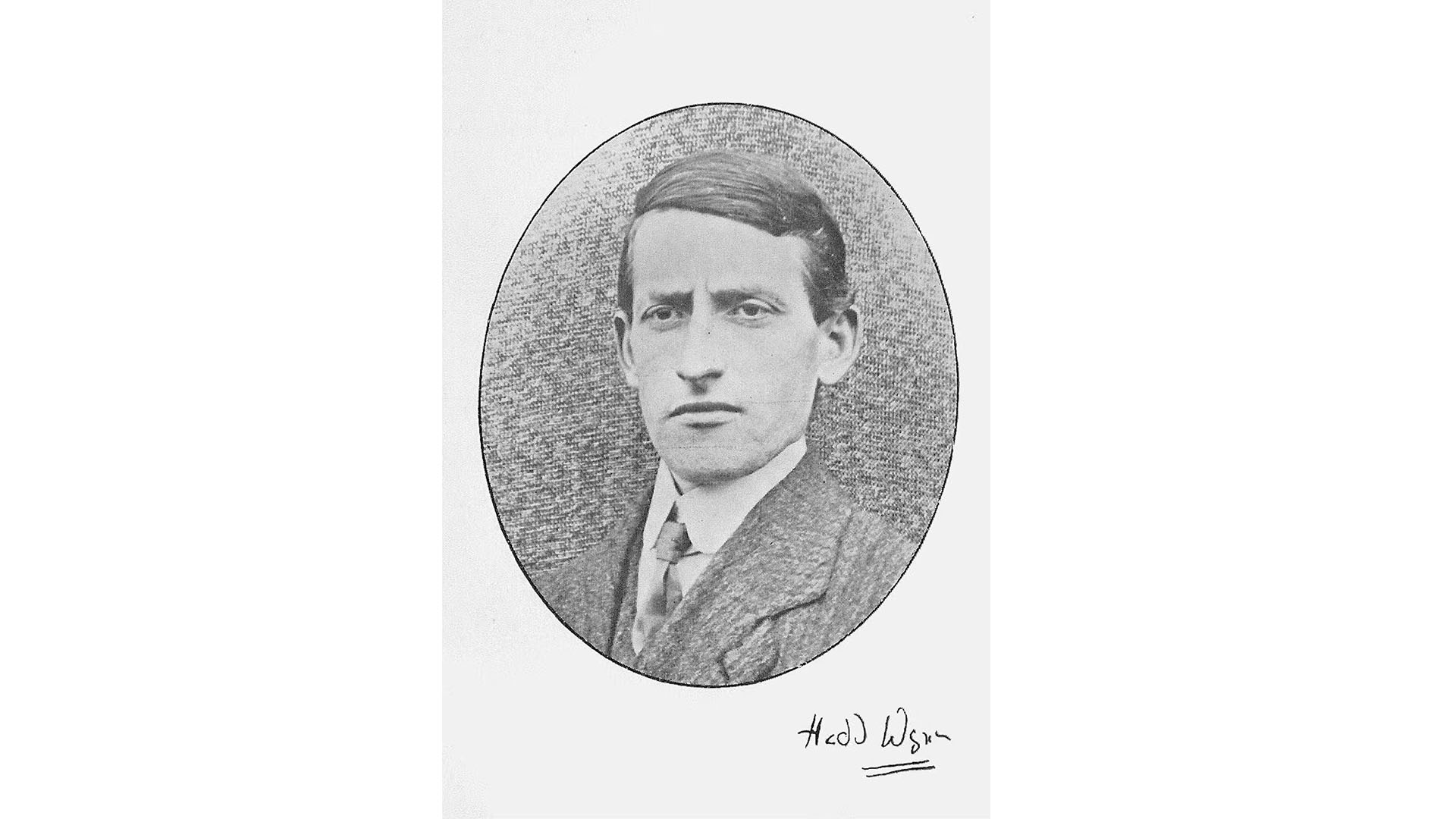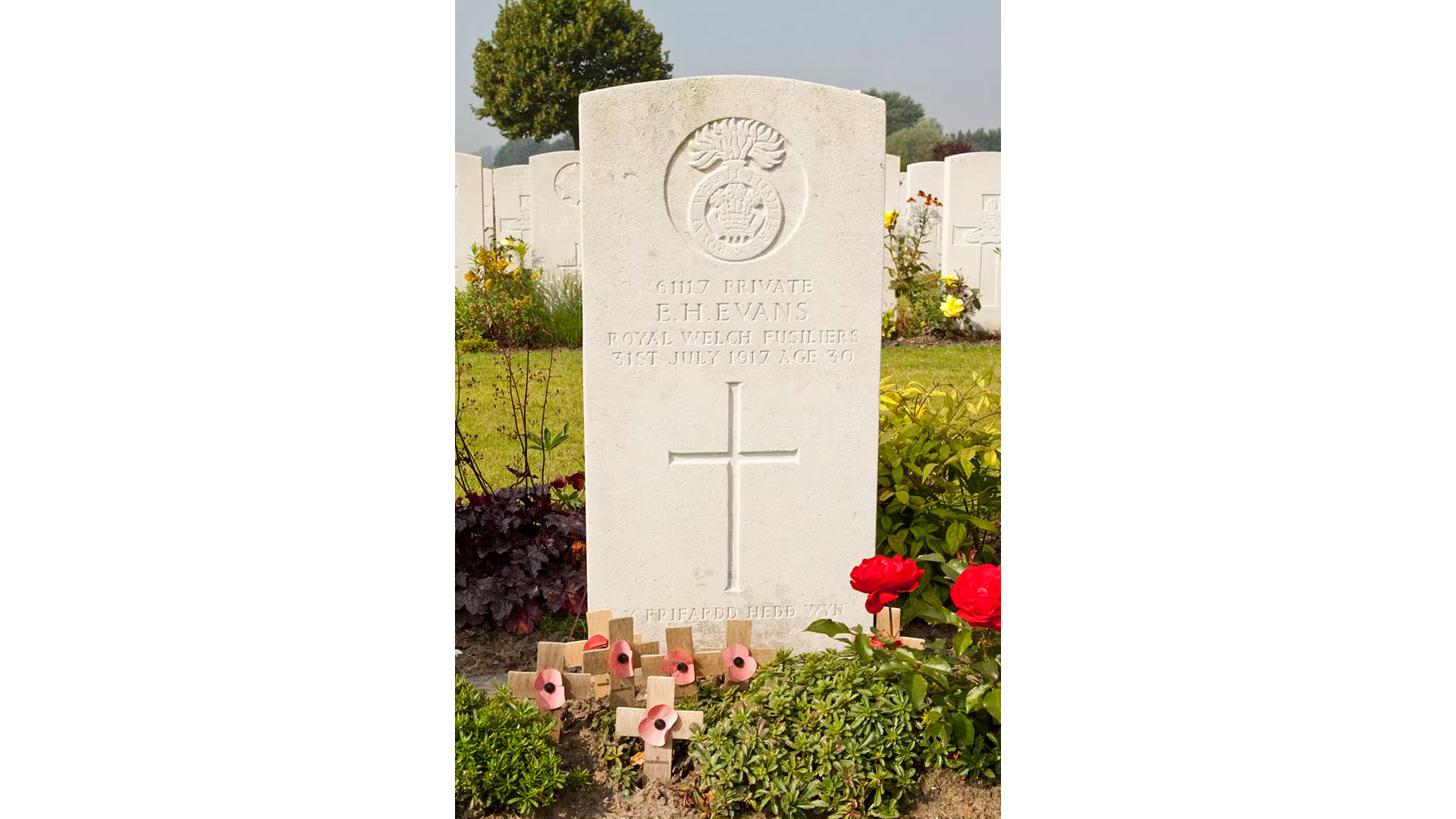The names Passchendaele, the Somme and Mametz Wood stand as grim sentinels, forever bound to the unimaginable carnage of the first world war. Almost 500,000 men were killed in three months at Passchendaele, the third battle of Ypres. On the first day of that battle, Wales lost one of its most talented poets.
Born on January 13 1887, Ellis Humphrey Evans was the eldest child of Mary and Evan Evans and one of 11 siblings. He became known by his bardic name, Hedd Wyn (Blessed Peace). The family lived and worked at a remote farm outside Trawsfynydd in north-west Wales, called Yr Ysgwrn.
Evan Evans bought his son a book on the rules of strict-metre Welsh verse when Hedd Wyn was 11 years old. He read the book with passion and enthusiasm, and soon mastered the difficult and intricate rules of strict-metre verse, known as cynghanedd.
He wrote his first ever englyn (a short four-lined poem in strict-metre) before his 12th birthday. Soon after, he began competing at local eisteddfodau, Welsh cultural festivals which showcase literary and artistic endeavours.
Hedd Wyn spent most of his short life at home. He received little formal schooling. His education was spasmodic and he was frequently absent from school when the weather was bad, as there was a substantial distance between the school and his home.
Hedd Wyn was an inept farmer and shepherd, but he loved looking after the sheep out on the mountain pastures, though only because the solitude and silence gave him ample opportunity to meditate and to write poetry.
 Hedd Wyn was 30 years old when he was killed.
Hedd Wyn was 30 years old when he was killed.
Conscription
And then came war. Hedd Wyn’s fate, along with thousands of others, was sealed when parliament passed the Military Service Act in 1916. This new legislation imposed conscription and was aimed at unmarried men or widowers.
Hedd Wyn had no choice but to enlist. He joined the 15th battalion of the Royal Welsh Fusiliers, and by July 1917, he was stationed at Fléchin, a small village in northern France.
He and thousands of other soldiers were to participate in one of the major engagements of the war, the third battle of Ypres, otherwise known as the battle of Passchendaele. British troops were to occupy the village of Pilkem on Pilkem Ridge, and the marshlands to the east of Ypres before advancing towards Langemarck. Capturing the village of Pilkem and Pilkem Ridge, and holding both positions, was one of the main objectives of this enormous campaign.
It was during a period of intense fighting on Iron Cross Ridge on July 31 that Hedd Wyn was mortally wounded.
For a Welsh poet, winning the coveted chair at the National Eisteddfod, an annual festival celebrating arts, language and culture, represents the pinnacle of achievement. The chair is awarded to the winning entrant in the competition for the awdl – poetry written in strict-metre cynghanedd . A crown is awarded separately to those writing in free verse.
 After a petition was submitted to the Imperial War Graves Commission following the war, his headstone at Artillery Wood was given the additional words: Y Prifardd Hedd Wyn (The Chief Bard, Hedd Wyn).
After a petition was submitted to the Imperial War Graves Commission following the war, his headstone at Artillery Wood was given the additional words: Y Prifardd Hedd Wyn (The Chief Bard, Hedd Wyn).
Chairing ceremonies are presided over by the archdruid, who reads the adjudicators’ comments before announcing the nom de plume of the winning bard. Nobody knows the true identity of the poet until the archdruid asks them to stand.
Before enlisting, Hedd Wyn had started working on an awdl for the chair at the 1917 National Eisteddfod. Due to the war, the Eisteddfod that year was held in England, in Birkenhead near Liverpool. Hedd Wyn had almost won the chair the previous year in Aberystwyth.
While stationed in France, he finally completed his awdl titled Yr Arwr (The Hero) and posted it to Birkenhead under his nom de plume, Fleur-de-lis. He was working on the poem until the last possible minute.
A packed crowd was watching the chairing ceremony in Birkenhead in early September, and among them was the prime minister at the time, David Lloyd George, himself a Welsh speaker. Without knowing he had died of his wounds several weeks earlier, the adjudicators had unanimously awarded the chair to Hedd Wyn.
As is customary, the archdruid called out Fleur-de-lis three times. But nobody stood up. Then he solemnly announced that the poet had been killed in battle six weeks earlier. The empty chair was draped in black in front of an emotional crowd. The 1917 eisteddfod became known as Eisteddfod y Gadair Ddu (the Eisteddfod of the Black Chair).
Hedd Wyn’s legacy
A volume of Hedd Wyn’s poetry, entitled Cerddi’r Bugail (The Shepherd’s Verses), was published a year later. The first 1,000 copies were sold in five days. Eventually every copy of the 4,000 first edition was sold.
In 1923, a statue, depicting Hedd Wyn as a shepherd, the work of artist L. S. Merrifield, was unveiled by his mother in Trawsfynydd.
On St David’s Day 2012, Wales’ then first minister, Carwyn Jones, announced that Hedd Wyn’s home, Yr Ysgwrn, had been bought for the nation, to secure and safeguard the poet’s legacy. Two years later, it was renovated and turned into a museum by the Eryri (Snowdonia) National Park.
Hedd Wyn was a highly talented poet who wrote exquisite work. His englyn in memory of his friend, Lieutenant D. O. Evans of Blaenau Ffestiniog, for example, became an elegy for all the young men who had fallen on the killing fields of the Great War:
Ei aberth nid â heibio – ei wyneb
Annwyl nid â'n ango
Er i'r Almaen ystaenio
Ei dwrn dur yn ei waed o.
It can be translated as:
About this articleHis sacrifice was not in vain, his dear
Face will always remain,
Although he left a bloodstain
On Germany’s iron fist of pain.
This article was written by Alan Llwyd, Professor of Welsh, Swansea University
This article is republished from The Conversation under a Creative Commons license. Read the original article.



Rate and Review
Rate this article
Review this article
Log into OpenLearn to leave reviews and join in the conversation.
Article reviews